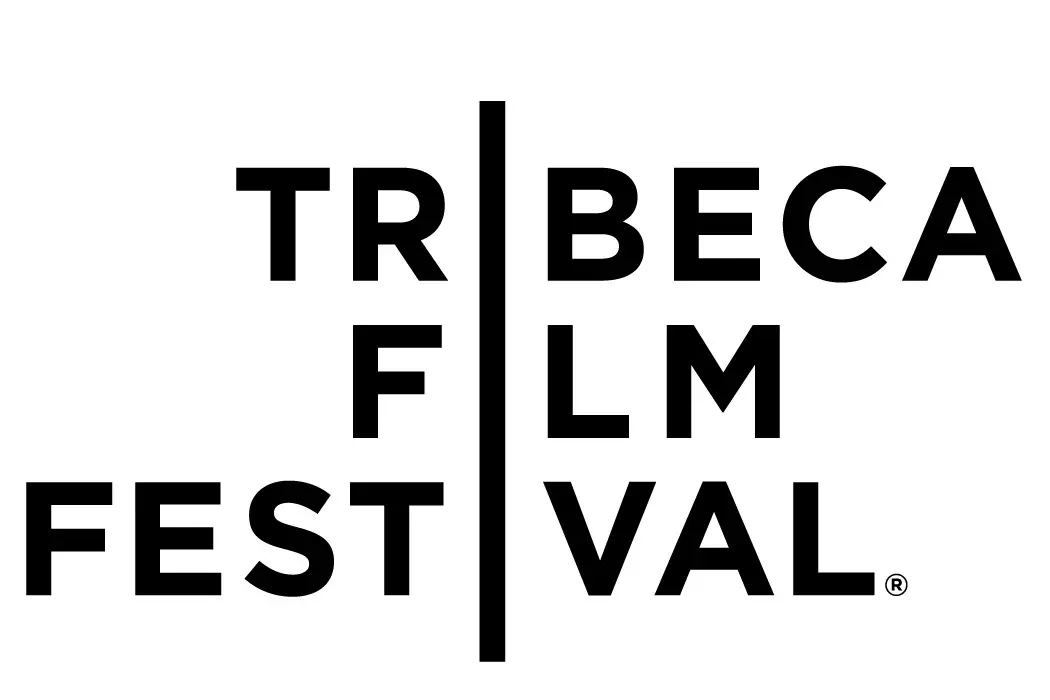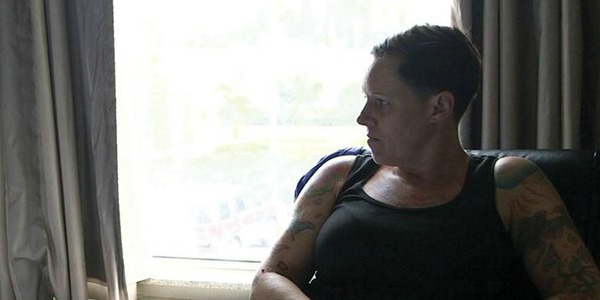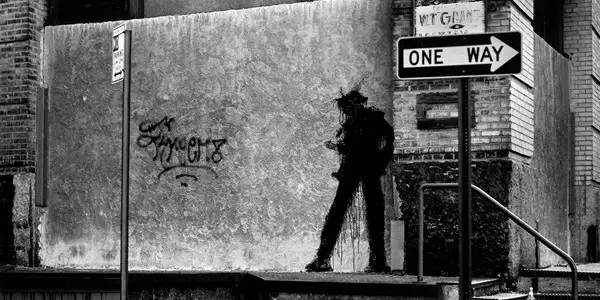Tribeca Film Festival Day 2 Round-Up

Stephanie Archer is 39 year old film fanatic living in…
With Day 1 under my belt, I was excited to make my way back to the city and back to the Cinépolis Theater in Chelsea New York. I had another full day of films (one taking place in New York!) that I couldn’t wait to start screening.
Following the red carpet last night, I was excited to finally see Aardvark – a film that, like Flower, had been on many media outlet’s “most anticipated” films for Tribeca Film Festival. Yet, I didn’t want today to be all about the narratives. Additionally, I had selected two documentaries to screen that had really peaked my interest.
The first of these documentaries was The Family I Had – a heart wrenching look at the aftermath of a family whose potentially sociopathic son has been convicted of murder. Shadowman, the second documentary I had chosen to screen, was the story of troubled, enigmatic street artist named Richard Hambleton, whose art work has been in an up and downhill battle with drugs and money since the early 1980s.
Aardvark

With no animal relatives, the aardvark is considered a singularity throughout the animal kingdom. Fitting no specific category within zoology specifics, it is the perfect parrallel to draw alongside Josh – the focus of Brian Shoaf’s directorial debut. Aardvark is the story of Josh (Zachary Quinto), a young man whose psychotic break at 19 and the absence of his famous brother (Jon Hamm) within his life have driven him to disorganization and hallucinations. He is an anomaly, his condition unable to be completely catalogued and categorized. Having started a new job and sessions with a new shrink (Jenny Slate), Josh’s search for help leads those around him to discover he is not the only one that is in need of it.
Zachary Quinto and Jenny Slate deliver stellar performances, each working off the other to elevate the believability of each other’s characters. Zachary Quinto is especially convincing, his character’s uncontrollable spiral into madness and a questionable reality will leave viewers heart-broken with every passing scene.
My only true complaint with casting was with regards to Jon Hamm. Jon Hamm’s performance was good, yet predictable – a role where his good looks help him bed a woman his character is taken with (sounding a lot like Mad Men to you too?). His most shining moment is towards the end of the film, when his character has a moment of self-exposure – giving Hamm a chance to stretch his acting skills.
What I find really interesting about the story that Brian Shoaf was trying to convey is that we as people feel the need to catorgorize and catalogue individuals with mental illness. In the case of Josh, he has a condition that fits most indicators of various particular conditions, yet never one specifically. He is one of a kind, an individual that can not be categorized. The people around him need to learn to deal and handle what is before them instead of applying preset restraints and understandings to what is happening to Josh.
The story is captivating and intriguing – a nod to the brilliant writing of Brian Shoaf. As a viewer you know that many of the experiences and people Josh is interacting with are hallucinations and a product of his mental instability, yet they are presented in such a way that you question what you know to be true as well. Josh knows, to some degree, that many of the people in his life are not real. Yet, he embraces them. In this sense, Josh parrellels the viewers point of view – you can embrace one reality while questioning if it is actually the correct one.
The Family I Had

When selecting this documentary, I had read a quick synopsis on IMDB, obtaining the gist that The Family I Had was about a family picking up the pieces of their lives after their sociopathic son commits a murder. I had no idea, however, the depth that this film would reach, or how truly gut-wrenching and heartbreaking the crime had been.
The Family I Had begins with a home video taken during Christmas – Paris, the son of the Bennett family, placing a gifted bracelet on his little sister Ella’s wrist – the voice of mother Charity Lee from behind the camera encouraging the interaction. It is a scene that many can relate to. Following the home video, rain washes away innocence and Charity Lee moves from behind the camera to enter the forefront – this is her story.
My heart instantly broke as she struggled to keep her composure, revealing to the camera that one night while she was at work, her son Paris convinced his babysitter to leave him unattended and proceeded to repeatedly stab his litter sister – killing her. As she recaps, the 911 video from that night captures the sounds of a scared little boy claiming to the operator that his sister was dead.
Life for this mother will never be the same again. Torn between grieving for her daughter and still loving her son, she finds that siding with either will contradict or leave the other to seem forgotten. At the time of the documentary, she had just moved into the home of her mother – whose relationship she had just recently rekindled. Her life has never been the same – and it never will be again.
The documentary itself is not only to cover the aftermath of a crime and the story of a grieving mother, but it also brings attention to mental illness both before and after a crime. Following Ella’s murder and during Paris’ trial, the mother tried to convince the prosecutor to convict Paris to a mental institution so he could receive the help he needed. Throughout his childhood, there had been signs that something was off with Paris – and with a previous murder and suspected killer in the family this illness may have been passed down.
Co-directors Katie Green and Carlye Rubin create a captivating yet gut-wrenching documentary that slowly unfolds before viewers. They deliver information not all at once, but slowly, pulling away at the full story layer-by-layer. They allow viewers to take the time needed to process what they are seeing and hearing, giving ample time for maximum saturation. By giving this story piece by piece, it also pushes viewers to face preconceived judgements they might have made, and reevaluate – whether it be judgements already formed prior to the viewing or judgements that had be made throughout the film.
Shadowman

At a time when the crime and murder rate was at its highest in New York City, street art was taking off, primed to be the driving force that would bring art collectors into the crime ridden streets of lower Manhatten. While many may remember the names of Jean-Michel Basquiat and Keith Haring during this time period, they were not the only “King -pins” of the street art world. Richard Hambleton, initially sweeping through New York City with his crime scene inspired art, would build himself an artistic empire that could not be tamed, out living those around him and repeatedly disappearing into the night.
Hambleton’s street art paintings and personal expression evolved over time – from murder crime scene art, to snap shot portraits, to shadowy figures (which he is most known and remembered for) and eventually an obsession with the hypocritical murderous image of a nation – the Marbolo man. As his increased drug addiction led him to loose himself in his high, his personal form of inspiration and artistic expression evolved in portraits depicting landscapes, the horizons, and seascapes.
While many over the years tried to help Hambleton reach his full potential both financially and as an artist, he would continually loose the support of those around him. He lived for the art, not for the money. His mindset made it near impossible at times to achieve success beyond an impoverished artist, continuously casting Richard Hambleton into homeless, poverty and invisibility.
Shadowman is an energetic, engaging and captivating documentary. The music selection heightens every scene in which it is utilized, taking the artistic imagery and documentary coverage to a new level. This is a time piece containing mesmerizing and heart-breaking footage beautifully selected and compiled by writer/ director Oren Jacoby. Accurately setting the scene from the moment Hambleton sets foot in New York City to his present condition is perfectly paced and is at times raw with truth. Yet, it was not just the historical footage, or the interviews with Hambleton, that break your heart and truly help you understand his story, but the interviews with those who helped or hindered him thoughout his life.
Conclusion
With the completion of Day 2 at Tribeca Film Festival, my mind was racing on the train ride home. Today was a day filled with films and documentaries that would leave me contemplative and lost in thought for some time. With another day of high quality films ahead, I was itching to get back having packed Day 3 with some short films, some animation and another narrative!
Let us know your thoughts!
Does content like this matter to you?
Become a Member and support film journalism. Unlock access to all of Film Inquiry`s great articles. Join a community of like-minded readers who are passionate about cinema - get access to our private members Network, give back to independent filmmakers, and more.













